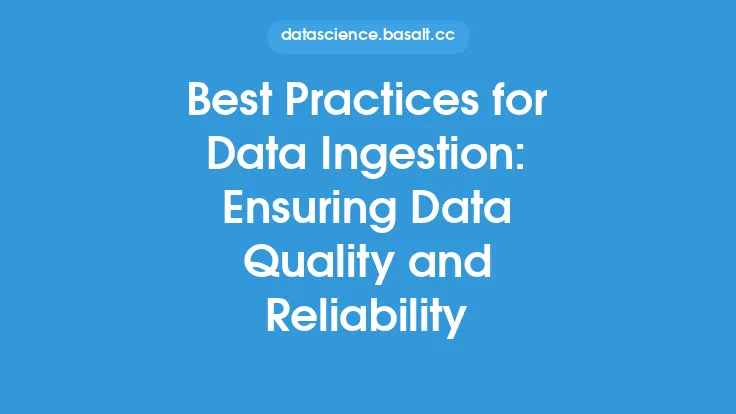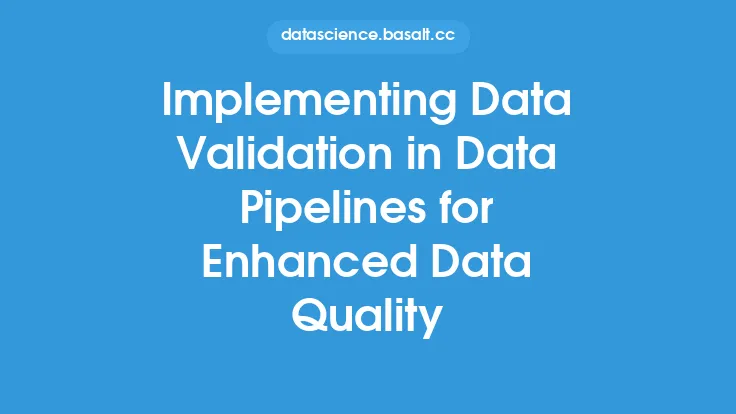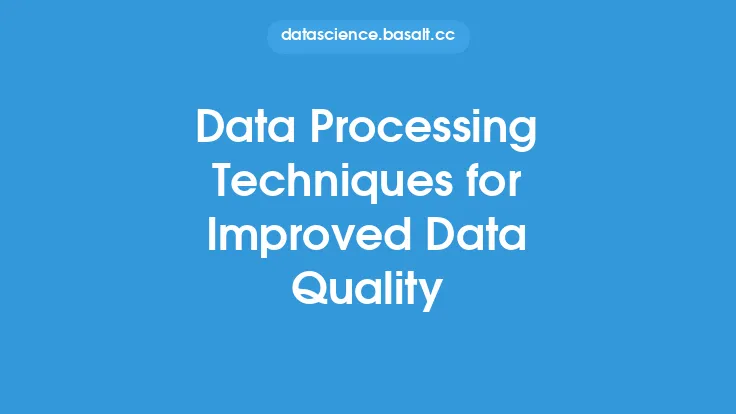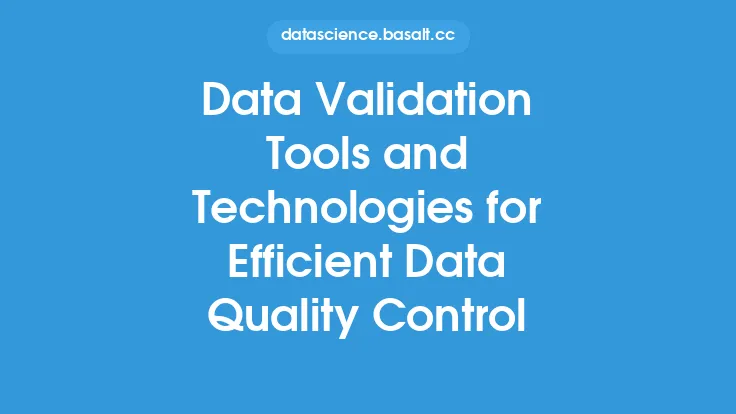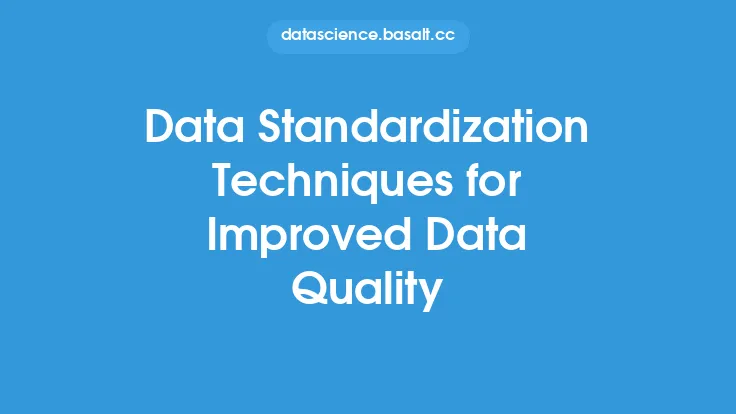Data validation is a critical process in ensuring the quality of data, which is a fundamental aspect of any data-driven initiative. It involves checking the data for accuracy, completeness, and consistency to ensure that it meets the required standards. In this article, we will delve into the various data validation techniques that can be employed to ensure data quality.
Introduction to Data Validation Techniques
Data validation techniques are methods used to verify the accuracy and quality of data. These techniques can be applied at various stages of the data lifecycle, including data entry, data processing, and data storage. The goal of data validation is to ensure that the data is reliable, consistent, and accurate, which is essential for making informed decisions. There are several data validation techniques that can be used, including data type validation, range validation, format validation, and cross-validation.
Data Type Validation
Data type validation involves checking the data to ensure that it conforms to the expected data type. For example, if a field is expected to contain only numbers, the validation process will check to ensure that the data entered is indeed a number. Data type validation can be performed using various techniques, including using regular expressions, data type checking functions, and data validation libraries. Regular expressions are a powerful tool for data type validation, as they can be used to match patterns in the data and ensure that it conforms to the expected format.
Range Validation
Range validation involves checking the data to ensure that it falls within a specified range. For example, if a field is expected to contain a value between 1 and 100, the validation process will check to ensure that the data entered is within this range. Range validation can be performed using various techniques, including using conditional statements, data validation libraries, and mathematical functions. Conditional statements are a common technique used for range validation, as they can be used to check if the data falls within a specified range and return an error message if it does not.
Format Validation
Format validation involves checking the data to ensure that it conforms to a specified format. For example, if a field is expected to contain a date in the format MM/DD/YYYY, the validation process will check to ensure that the data entered is in this format. Format validation can be performed using various techniques, including using regular expressions, data validation libraries, and formatting functions. Regular expressions are a powerful tool for format validation, as they can be used to match patterns in the data and ensure that it conforms to the expected format.
Cross-Validation
Cross-validation involves checking the data against other data to ensure that it is consistent and accurate. For example, if a field is expected to contain a value that is consistent with another field, the validation process will check to ensure that the data entered is consistent. Cross-validation can be performed using various techniques, including using data validation libraries, conditional statements, and data matching algorithms. Data validation libraries are a common technique used for cross-validation, as they can be used to check the data against other data and return an error message if it is not consistent.
Advanced Data Validation Techniques
In addition to the basic data validation techniques, there are several advanced techniques that can be used to ensure data quality. These include data profiling, data quality metrics, and data validation frameworks. Data profiling involves analyzing the data to identify patterns and trends, which can be used to identify errors and inconsistencies. Data quality metrics involve measuring the quality of the data using various metrics, such as accuracy, completeness, and consistency. Data validation frameworks involve using a set of rules and guidelines to validate the data, which can be used to ensure that the data meets the required standards.
Data Validation in Different Data Formats
Data validation can be performed on different data formats, including structured, semi-structured, and unstructured data. Structured data is highly organized and formatted, making it easy to validate using traditional data validation techniques. Semi-structured data is partially organized and formatted, making it more challenging to validate using traditional techniques. Unstructured data is not organized or formatted, making it the most challenging to validate using traditional techniques. In these cases, advanced data validation techniques, such as data profiling and data quality metrics, can be used to ensure data quality.
Data Validation Tools and Software
There are several data validation tools and software available that can be used to perform data validation. These include data validation libraries, data quality software, and data integration tools. Data validation libraries are software libraries that provide a set of functions and classes that can be used to perform data validation. Data quality software is software that provides a set of tools and features that can be used to measure and improve data quality. Data integration tools are software that provides a set of tools and features that can be used to integrate data from different sources and perform data validation.
Best Practices for Data Validation
There are several best practices that can be followed to ensure effective data validation. These include validating data at multiple stages, using a combination of data validation techniques, and testing data validation rules. Validating data at multiple stages involves checking the data at different points in the data lifecycle, such as during data entry, data processing, and data storage. Using a combination of data validation techniques involves using multiple techniques, such as data type validation, range validation, and format validation, to ensure that the data is accurate and consistent. Testing data validation rules involves testing the data validation rules to ensure that they are working correctly and catching errors and inconsistencies.
Conclusion
Data validation is a critical process in ensuring the quality of data, which is a fundamental aspect of any data-driven initiative. By using various data validation techniques, such as data type validation, range validation, format validation, and cross-validation, organizations can ensure that their data is accurate, consistent, and reliable. Additionally, advanced data validation techniques, such as data profiling and data quality metrics, can be used to identify errors and inconsistencies in the data. By following best practices, such as validating data at multiple stages and using a combination of data validation techniques, organizations can ensure effective data validation and improve the overall quality of their data.
